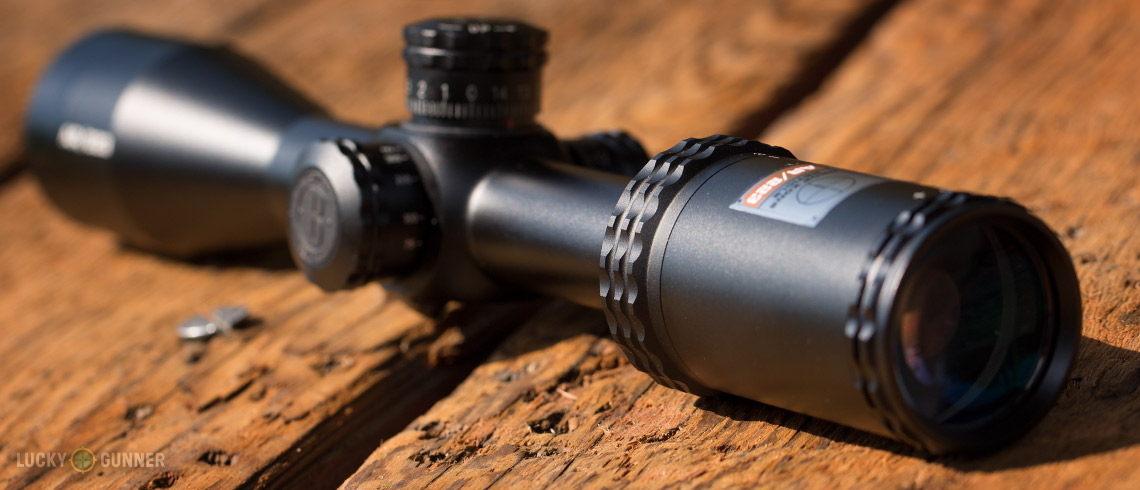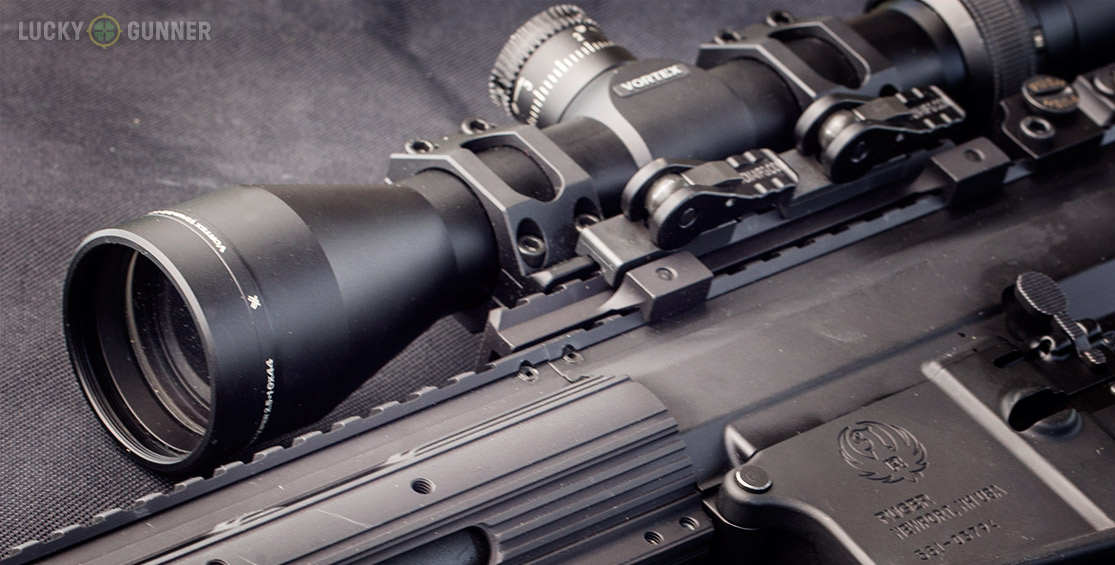One thing that always amazes me when I walk into a gun store is just how many rifles lack any sort of iron sights.
Metallic sights have been an integral part of rifles since rifling was invented, and yet in the last few decades we’ve seen fewer and fewer factory rifles equipped with iron sights. For me, this is perhaps the most powerful illustration of the effectiveness of riflescopes. Having spent innumerable hours behind riflescopes as a recreational shooter and as a Marine, I can confidently say that the modern riflescope is an excellent addition to almost any rifle, whether it is a dedicated paper-puncher, a seasonal hunting tool, or a military weapon.
Shooting scopes allow us to see targets more clearly and to aim more precisely, so it’s little wonder that they are so widely used on rifles today. Unfortunately, with vast number of options available it’s easy to become overwhelmed by all the different features and the jargon associated with them.
To help sort through the hype and confusion that can surround buying a rifle scope, this guide examines both the basic and advanced features of modern riflescopes and hopefully help you to select the ideal scope for your particular needs.
How to Read Scopes
The basics of reading a scope’s specs have been covered here on the Lounge before, but just to recap, the most basic aspects of a riflescope are given in a standardized format with the magnification first and the objective lens diameter second.
These two pieces of information are separated by an “x”. The magnification number represents how many times larger an image becomes when viewed through the scope. You will often see two numbers for the magnification with a dash between them. This indicates that the level of magnification is adjustable over the range from the lower number to the higher one. For example, a 3-9x32mm scope will be able to adjust from 3x magnification all the way to 9x magnification and everywhere in-between. The second value in a scope’s description is the diameter of the forward-most lens measured in millimeters. This forward lens is called the objective lens and we’ll go more in depth about it farther down.
Optical Power
The first thing you’ll want to figure out when buying a scope is how much magnification you will need. A scope’s magnification level is going to establish the limits of its usefulness. A 1,000 yard bench rest shooter would be horrendously underequipped with a 4x scope, while a deer hunter in thick forests would have a very hard time making a shot with a 32x scope.
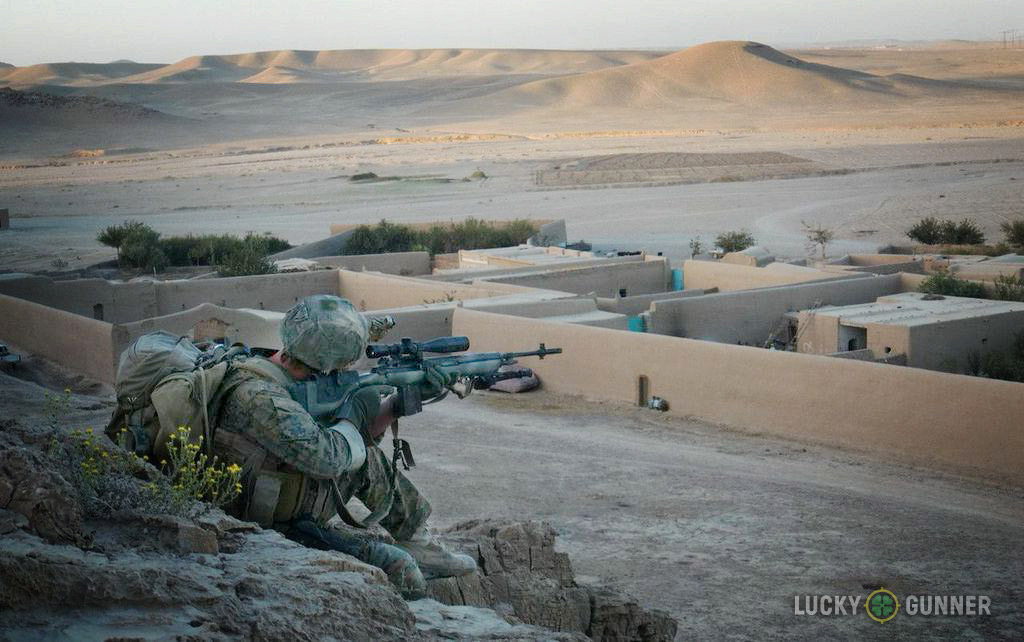
Optimal magnification for a given task is a subjective matter but it is important to keep in mind that lower magnifications such as 4x or 6x will allow for faster and more intuitive shooting, as well as better target tracking. Higher magnification scopes such as 16x and beyond allow for great target resolution, but will be larger, heavier, more expensive, and difficult to use from unsupported positions.
As a very general rule scopes lower than 10x are typically better suited for offhand shooting and shooting at distances of less than 500 yards, while scopes greater than 10x are best suited to rifles intended to be fired from some sort of supported position like a bipod or sandbags. Fortunately, you can sometimes have your cake and eat it too. With variable power scopes we can have one scope that allows for a wide range of magnifications to be selected at will.
The only real drawbacks for variable power scopes are that they are often more expensive than their fixed power counterparts, and potentially less rugged due to their use of moving parts. Despite these points I heartily recommend a variable power scope whenever possible due to the much increased utility and flexibility. It should also be noted that scopes from reputable manufacturers are extremely unlikely to have any kind of issues whether they are variable or fixed power.
Size Matters
Once you have determined how much magnification you need you’ll then have to settle on an objective lens size.
The objective lens is what transmits the ambient light in order to focus it into an image. The larger the objective lens is the more light it is able to transmit to your eye which means a brighter and clearer image. Large objective lenses usually accompany higher magnification ranges, and it is only really at high magnification such as 12x and upward that the difference between a 40mm objective and a 50mm objective is best appreciated.
From a brightness and clarity standpoint a large objective lens is better; however large objectives come with their own set of problems as well. A larger objective lens is going to require it to be mounted higher over the barrel and action. This can lead to issues with maintaining a proper cheek weld which will negatively impact your shooting ability. Fortunately there are ways to compensate for this, either by purchasing some sort of cheek-riser or by making one of your own. One thing that cannot be compensated for is the size of your scope. A large objective lens is going to be heavier and bulkier than a smaller one. Not only can this affect the balance of a rifle, but it also makes it easier for the scope to accidentally knock into things, which can lead to loss of zero or even a cracked lens.
Reticles
 There are literally dozens of different reticle patterns available today, from simple center dots all the way to complex grid patterns. For the sake of brevity we’ll limit ourselves to the three most common types.
There are literally dozens of different reticle patterns available today, from simple center dots all the way to complex grid patterns. For the sake of brevity we’ll limit ourselves to the three most common types.
Duplex Reticle: The duplex reticle is by far the most common reticle today and is characterized by a thin center crosshair which becomes thicker at the outer area of the scope. When you think of looking through a scope, you’re probably imagining a duplex reticle. This design naturally focuses the eye towards the center of the scope and the thick outer bars can also aid in low light shooting where the fine center crosshair may not be visible. Scopes with this type of reticle are best suited for most hunting and target shooting applications.
Mildot Reticle: The mildot reticle is based off of the duplex reticle pattern but it has some subtle yet powerful enhancements. The size and spacing of the dots along the reticle-lines correspond to specific angles measured in milradians. The power of the mildot reticle comes from the ability to use it to determine a target’s range as long as the target’s size is known, and for making fast and intuitive adjustments for wind and elevation. In addition, the dots themselves can also be used as a sort of BDC. Once you understand the power of the mildot reticle it’s very easy to see why it has become the standard reticle for military and law enforcement snipers. I recommend this type of reticle for any rifle being used beyond 300 yards because it retains the intuitive focus of the duplex reticle while also allowing the user to perform range calculation as well as use accurate hold-offs for wind and elevation adjustment. If you want to reach out and touch something then you’ll be well-served by a mildot scope.
BDC Reticle: BDC stands for “bullet drop compensator” and today BDC reticles are more popular than ever. A BDC reticle allows for accurate shooting over different target ranges without making adjustments to the scope’s elevation setting. This is accomplished by having several aiming points incorporated into the reticle pattern which correspond to different target distances. BDC scopes offer a lot of utility beyond the simple duplex reticle but are only available for certain cartridges and are only moderately accurate for ranges beyond 500 yards even when using the specific load that the reticle is calibrated for. That said, after using an ACOG-equipped M4A1 for years at home and overseas I can think of no better type of optic for a general purpose rifle or carbine than a low magnification BDC scope. If you’re looking for a great all-purpose optic for your AR-15 or similar rifle then I highly recommend this type of reticle.
MOA or MRAD?
So you know how much power you need and what type of reticle you want, now it’s time to determine how your scope is adjusted. There are two different measurement systems for scope adjustment: MOA and MRAD.
MOA is the most common and stands for “Minute of Angle” and while technically this means 1/60th of an angular degree, it is commonly associated with linear inches; this is because 1 MOA very closely corresponds to 1 inch at a distance of 100 yards. One major benefit of MOA adjustment is that it allows for more precise zeroing than milradian scopes because MOA adjustment increments are smaller, typically 1/4 inch at 100 yards, but sometimes even half that. This is great for anyone wanting an extremely precise zero or very fine adjustment capability at long range.
The main drawback for MOA is that calculating adjustments becomes complex at ranges other than 100 yards, and so MOA adjustment works best when paired with a duplex or BDC reticle and simple covered adjustment screws. Some scopes will feature MOA adjustment turrets paired with a mildot reticle, but this configuration is not optimal because it does not allow for the most efficient use of the mildot system.
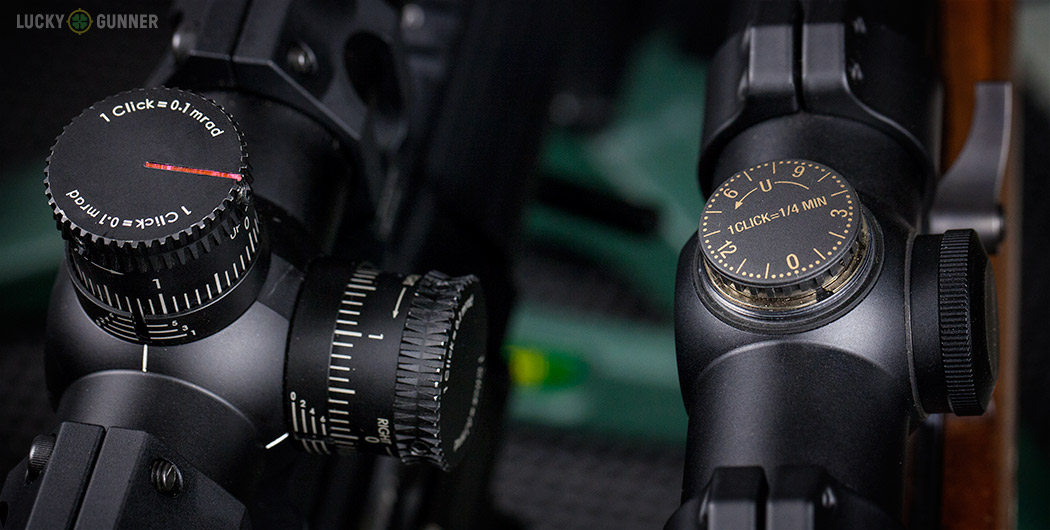
MRAD is short for milradian, and is also abbreviated as mil or mils. Much like MOA, a milradian represents a fractional section of an angle; in this case 1/1,000th of a radian. 1 milradian works out to be about 3.6 inches at 100 yards. This measurement may seem pretty awkward compared to MOA but it actually leads to much simpler adjustments. This is because the reticle in milradian scopes is essentially used like a ruler. If you observe through the scope that a bullet has impacted 1.2 mils below the center crosshair then you can simply adjust up 1.2 mils and be on target. The real beauty of this is that the process works the same way no matter what the range is because you are never trying to calculate a linear measurement from an angular one. For example, when adjusting in MOA a shooter must keep in mind that an adjustment of 1/4 MOA means a 1/4 inch shift at 100 yards and therefore a shift of 1/2 inch at 200 yards.
Simple enough, but it gets very complex very quickly when you consider calculating adjustments for ranges like 328 yards. Milradians circumvent calculating adjustment in linear terms by having the reticle serve as a scale and allowing the shooter to measure using angular deviation. Milradian adjustment is only found on mil reticle scopes, and while favored by most long range shooters, some hunters wishing to utilize a milradian scope may find the exposed adjustment knobs to be a liability in the field.
Focal Plane
Another option modern scopes feature is the choice of two different positions for the reticle within the scope. These positions are called the first focal plane and the second focal plane, or FFP and SFP respectively.
The majority of scopes today use SFP reticles, and what this means is that when the magnification level of the scope is changed, the reticle stays the same size in relation to the overall image size. This is helpful because it presents a clear and consistent sight picture at all levels of magnification. It must be noted however that SFP scopes using mildot or BDC reticles will need to be adjusted to maximum magnification for their reticles to be utilized fully.
First focal plane or FFP reticles do not have this issue because the size of the reticle scales up and down as the magnification changes. This allows any milradian measurements or BDC markings to be accurate no matter what magnification the scope is set to. The downside to this is that on low levels of magnification such as 3-5x the reticle can become difficult to see, and so FFP scopes are best suited for long range shooting where they will rarely be set to low magnification.
Parallax
Simply put, parallax in riflescopes is when the reticle appears to change position in relation to the target when the head is moved slightly. This occurs when the scope is not able to focus the target and the reticle on the same optical plane and can potentially lead to missed shots or bad groupings.
Most inexpensive or low magnification scopes are set to be parallax free at a specific distance such as 100 yards and will not have the ability to correct for parallax at longer or shorter ranges. This is perfectly fine for lower magnification scopes because any reticle shift will be too small to matter, but higher magnification scopes such as 12x and beyond should be equipped with a parallax correction knob. This is sometimes referred to as “side focus” and is typically located opposite the windage turret. You can check for parallax by nodding your head up and down slightly while looking through the scope and keeping the rifle steady. If the crosshairs appear to shift position on the target then you have parallax.
One neat way to eliminate parallax without using a parallax adjustment knob is to pull your head back until there is equal scope shadow on all sides of the reticle. This ensures that your eye remains at exactly the same spot in line with the reticle and the target and may save you valuable seconds during a hunt or a competition.
Paying Out
Now that you might have a solid idea for what you need in a scope you’re going to have to find one that fits your budget. It’s no secret that riflescopes can cost a lot of money.
Premium offerings from Schmidt and Bender, Nightforce, Leupold, and others can carry a price tag of $3,000 or even more. So, what does all that money actually get you? In most cases you pay more for increased adjustment precision and repeatability, as well as optical clarity and overall durability. Keep in mind though that the law of diminishing returns is in full effect here. A scope that costs several hundred dollars more than another may only have 3% better light transmission and 5% more repeatable adjustments. This is because manufacturing is exponentially more expensive the tighter tolerances become. So remember that just because you can spend a small fortune on a riflescope doesn’t mean that you have to. Today’s scope market is the largest it has ever been, and manufacturers new and old are competing for their share of it. This means you have lots of options at many different price points.
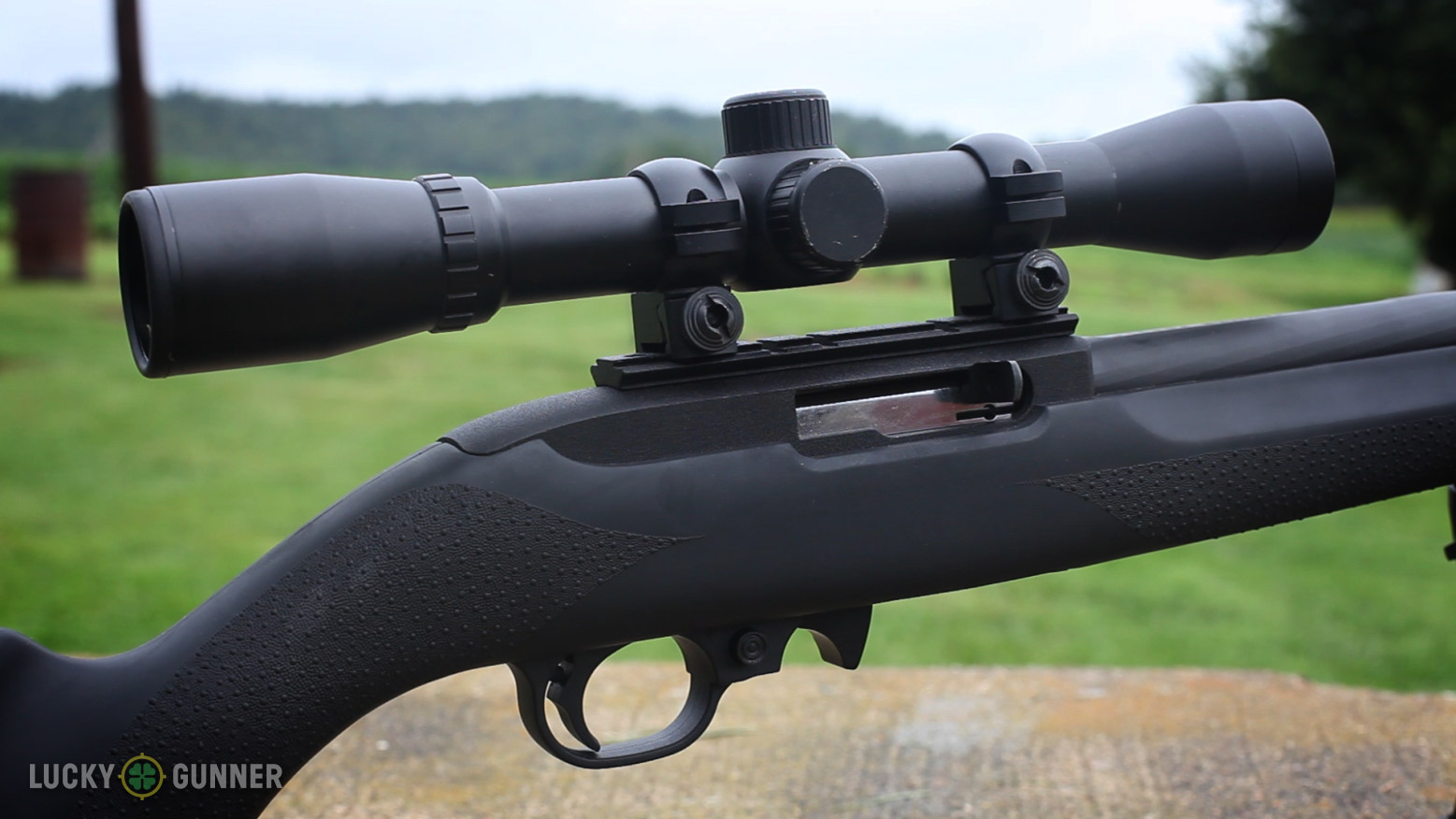
As a general rule I suggest budgeting at least $200 for a non-magnum centerfire rifle scope. The $250-$300 range is the real sweet spot for scopes currently though, and it opens up a lot of options in terms of reticles, magnification ranges, and even advanced features such as parallax adjustment and reticle illumination. Newer companies like Primary Arms and Vortex Optics have amassed quite a following based on their superb low-cost optics and are worth looking into for those on a tight budget.
It’s important to be thorough and specific when searching out that perfect scope. The internet is a powerful tool, and one way to begin finding your ideal optic is to simply search by key features, such as “BDC reticle” or “MRAD turrets.” If you’re more of an in-store shopper then make sure you understand all the terminology here so that you can make an informed decision at the counter. Also be prepared to compromise a bit if necessary and prioritize the really important things like magnification range and reticle type, and always investigate the manufacturer’s reputation. When you’re figuring the final cost, don’t forget to include a set of quality scope rings, and the fee for having a qualified gunsmith properly install the optic.
When in doubt, pay a little more for the name and warranty you can trust. These days rifles are more often than not defined by their optics so it’s important to select a scope that meets your needs, and to understand exactly what you’re buying. Whether you’re planning on plinking, punching paper, or hunting big game, I hope this guide helps you get the most out of your rifle and your trigger time.
